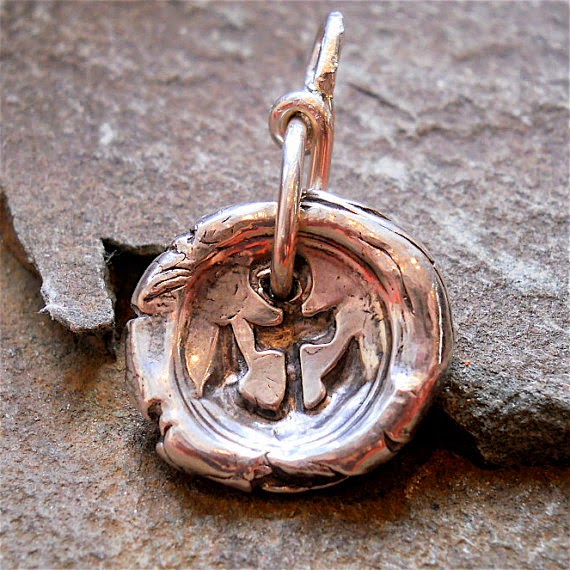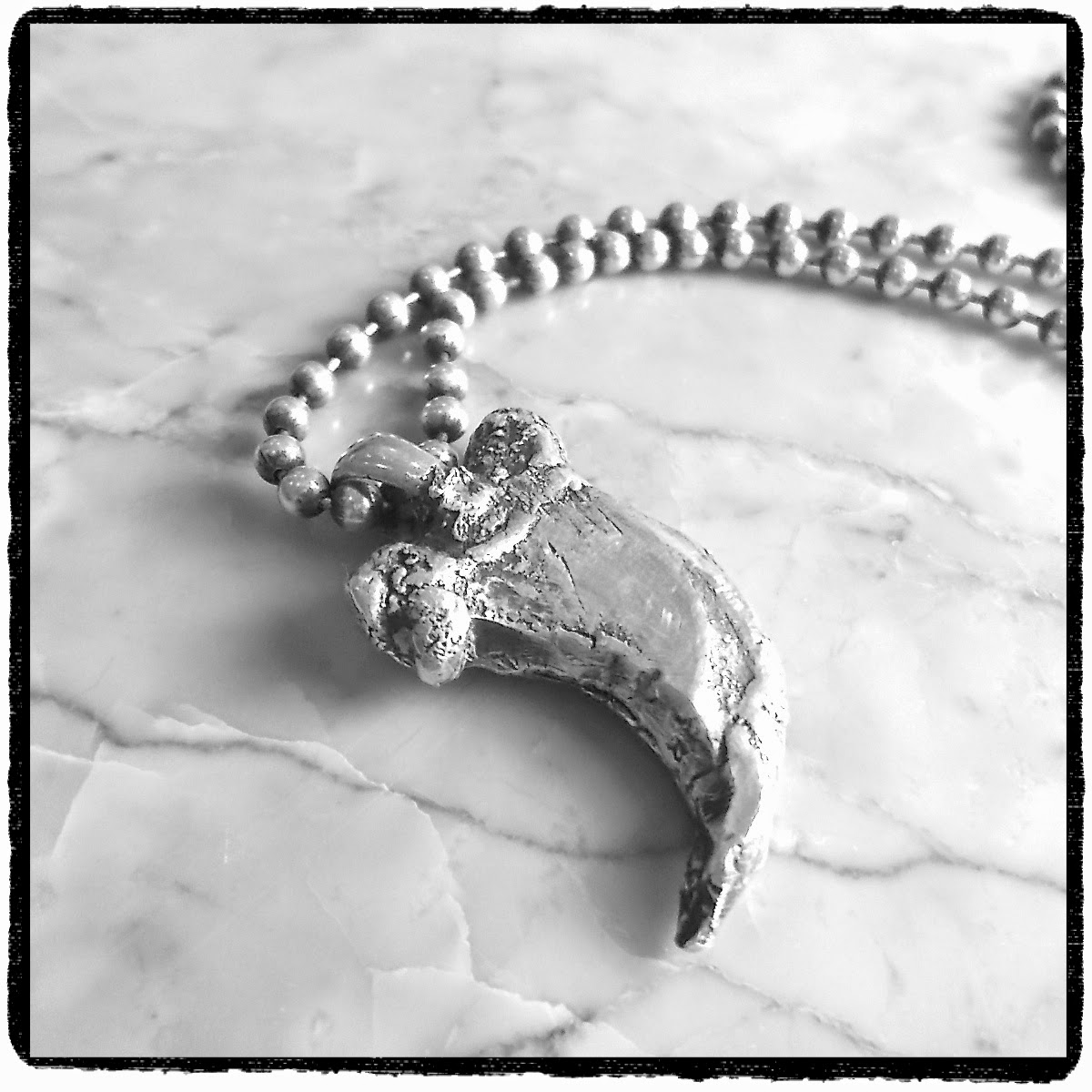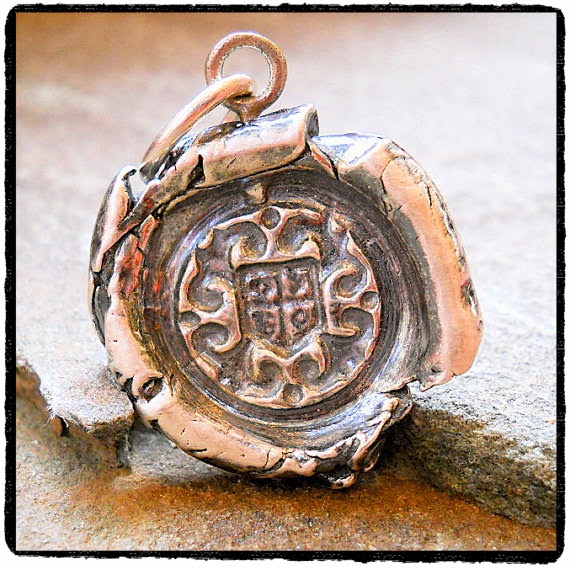A History of Wax Seals
 |
| My personal collection of wax seal stamped initials from 1750 - 1972 |
Personal Wax Seal Stamps from 3500BC to Today
The use of wax seals largely disappeared long before the popularity of handwritten correspondence did. The disappearance most likely corresponds with the invention of the sticky envelope in the latter half of the 19th Century when automatic envelope folding machines, and more importantly, pre-gummed envelopes, were developed.
The history of the wax seal is long and romantic. They have served many purposes over centuries. They have been used to identify a sender, authenticate documents, and to insure privacy. Seals of one form or another were used by royalty, government officials, religious entities and military officers.
 |
| From my Personal Collection - I Have Drawers and Drawers of These! |
As a pre-teen and teenager in the seventies, we were not quite as genteel as the Royals. We bought our wax seal stamps in the “head shop” and used them for sheer grooviness. Peace signs, zodiac signs, dragons, moon and stars and the like. But no letter to a friend at camp was sent without one... or six.
I still find them so appealing that I have begun adding them to my few and far between written correspondence. They add an element of distinction (and, perhaps for me, give subtle subliminal promotion of my wax seal jewelry business.)
 |
| Shameless Plug for my Aforementioned Wax Seal Jewelry at Your Daily Jewels A Seal Emblem from Notre Dame de Paris, 1780, Can you see the "N" and "D"? |
If you’ve ever been curious about wax seals, I will cover their history here, and my post next week will be a photo tutorial on how to make them yourself.
A Little History of Wax Seals
The use of seals can be traced all the way back to the world’s first civilizations, and have been found in Mesopotamia and are believed to hail from 3500BC. They were made with clay that was impressed with engraved cylinders or rings.
 |
| Ancient Turquoise Carving Used as a Wax Seal |
Seals have served as a stamp of indisputable authenticity throughout history, just as a signature is accepted in the world today. The use of seals can be traced back to the Old Testament, wherein it is written that Jezebel used Ahab’s seal to counterfeit important documents.
 |
| www.miladisplays.com |
The seal itself often bears a distinctive emblem or symbol specific to the sender. Because these seals were symbols of power and used to authenticate a person’s wishes, they were typically destroyed after the owner died to prevent posthumous forgeries.
 |
| My Wax Seal Wheels from the Early 1800's |
The use of wax seals gradually spread to aristocrats, monasteries and guilds (for example, butchers would sign agreements with a seal bearing the image of a hog or cow), and eventually to ordinary freemen by the 13th century.
Romano-British Gold Signet Ring Wax Seal Stamp, 4th C. AD. A cross on a circular bezel, within a dotted border. A very rare Roman, Christian ring during the occupation of Britain by the Romans. |
Utilized in this official capacity, seals were sometimes placed directly on an official document but were most often attached in the “pendent style" so not to become lost. The seal was applied to a cord, ribbon, or strip of parchment and hung loose after being threaded through a hole or slot at the lower edge of the document.
 |
| asteriamusica.org |
(above) When the Swiss decided they wanted to go to war with Charles, Berne removed its wax seal from this Treaty for Peace that they had signed with Burgundy in 1467. Look closely, you can see the two holes left by the absence of the Swiss seal.
Wax Seals in Private Correspondence
Seals were used to seal handwritten letters which were the only form of correspondence available to express one's deepest true feelings and thoughts for a great part of our history. I am sure many a Victorian-Era parent cracked the seal of a letter from a suitor to an anxiously awaiting daughter.
 |
| "Am I Welcome" Wax Seal, 1790 |
Wax seals take me away. I can't help but envision a young Victorian lady seated at her vanity opening a letter from her beau with a wax seal that reads "Am I Welcome", hinting that he soon shall be in her area of the country and would love to stop in and see her. The other wax seals are from my collection. See the loops? They were often worn as necklaces, on charm bracelets or as watch-fob adornments so they were always handy.
In the Middle ages, using a wax seal to keep a letter closed, ensure it hadn’t been tampered with, and confirm it was indeed written by the supposed sender was a practice used in this period, but the widespread use of the seal did not really take off until the post-medieval period.
As travel, emigration, and colonization increased, wax seals were not simply applied to keep communication confidential, but as a practical necessity.
Before the British and American postal reforms of the mid-19th century, sending a letter was quite expensive; it cost 25 cents in the US to send a letter over 450 miles – quite a lot in those days.
Furthermore, postage was based on distance and number of sheets.
An envelope would have counted as an additional sheet – doubling the cost – so letter writers used a single folded piece of paper and then sealed it shut with wax to avoid the extra expense. Envelopes were considered a frivolous luxury.
 |
| Three Antique Wax Seals from my collection, primarily used to create Sterling Wax Seal Jewelry |
During the Industrial Revolution a burgeoning pre-gummed envelope industry emerged. The use of the wax seal slowly diminished after postal reforms significantly reduced the cost of postage and changed its basis from the number of sheets to overall weight. The seals only added more weight, and thus, more cost to mailing.
Letter writing became much more accessible to the masses and the volume of letters mailed increased fivefold, but not the use of the faithful wax seal.
If you’re interested in creating wax seals as in days of olde, check back next week for part 2 when I will post a photo tutorial how to create a wax seal.
Thank you for visiting and reading!
More Sources on the topic:
1. The University of Notre Dame has a large website showing Medieval Seals from their collection of facsimiles of the originals.
2. Durham University Library displays a collection of Medieval Seals.
4. Archim, the website of the French National Archives, has an exhibition of Seals from Burgundy.
If you prefer a book, try:
1. Tommochy, A.B. 1952 Catalogue of British Seal-Dies in the British Museum London: British Museum or Harvey, P.D.A. and McGuinness, A. 1996
2. A Guide to British Medieval Seals London: British Library and Public Record Office. A number of black and white drawings of seals in this section have been derived from Bloom, J.H. 1906
3. English Seals London: Methuen and Boutell, C. 1899 English Heraldry London: Gibbings and Co.
The
complete catalogues of seals in the British Library, or the British Museum as
it was when these antique tomes were produced, can be found on the Internet Archive.
For a slightly different perspective, The
Weekend Wanderers Metal Detecting Club shows an assortment of seal
dies and matrixes that careless people have lost in the fields of old England
over the centuries.
The
Portable Antiquities Scheme records small archaeological finds,
which include numbers of medieval seal dies and matrices.
If you are interested in the heraldic aspect (as I am,) or want a seal identified, try the College of
Arms or The Heraldry Society.



















